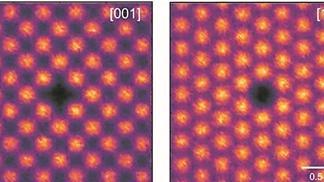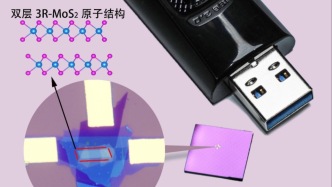

Simulated 2D atomic image from an atom probe. Image credit: University of Sydney
In a paper published in the latest issue of Nature Materials, a team from the University of Sydney, Australia, reported a new method for decoding the "material genome". This method can detect tiny changes in the atomic-level structure of crystalline materials, improving people's ability to understand the fundamental origins of material properties and behaviors.
The breakthrough is crucial for developing innovative materials and will lead to the development of stronger and lighter alloys for the aerospace industry, a new generation of semiconductors for electronic devices and improved magnets for electric motors.
The study used atom probe tomography (APT) to unravel the complexity of short-range order (SRO). The SRO process is key to understanding the local atomic environment. SRO is often compared to the "material genome", which is the arrangement or configuration of atoms within a crystal. Its importance lies in the fact that different local atomic arrangements affect the electronic, magnetic, mechanical, optical and other properties of the material, which have a great impact on the safety and functionality of subsequent products.
The research focused on cobalt-chromium-nickel high entropy alloys, which are very promising for advanced engineering applications. The team used complex APT imaging data combined with advanced data science techniques to visualize atoms in 3D to observe and measure SRO and compare changes in the alloys under different processing conditions.
The research provides a template for how SRO can control key material properties and gives scientists a new pair of "eyes" to see how tiny changes in atomic-level architecture can lead to huge leaps in material performance.
Crucially, SRO provides a detailed, atomic-level blueprint that enhances our ability to computationally simulate, model and ultimately predict the behavior of materials.
[ Science and Technology Daily Editor-in-Chief’s Comments ]
We know that atoms are the basic units that make up matter. The atomic structure affects the way atoms combine, and the way atoms combine ultimately determines the type of material. In other words, the structure and relationship of atoms directly affect the physical and chemical properties of the material, resulting in different materials having different properties. Now, scientists have achieved the ability to see this structural relationship with 3D "eyes" and unlock the arrangement changes of atoms under various conditions. This is undoubtedly equivalent to having a key to open the door to the beautiful world of a new generation of materials.
